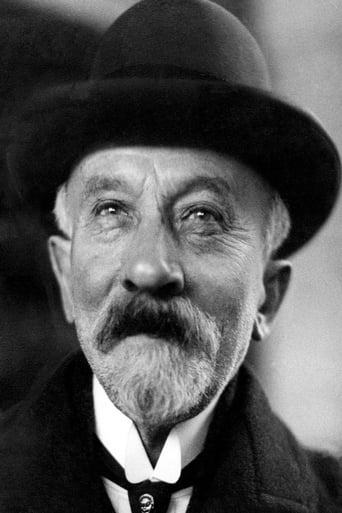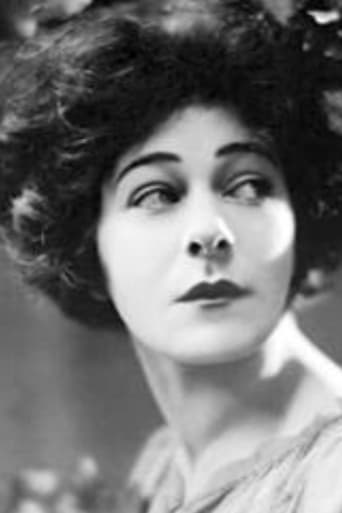Ben Davis
There was an adaptation of Cinderella all the way back in 1899. Who knew? It's pretty good. So good in fact that I'm going to go ahead and predict that this is going to be a 100x better than the live action version Disney's releasing. Anyway, George Méliès manages to tell the story without cutting anything major out. It has the fairy godmother transforming the mice into knights (I think they were knights) and the pumpkin into a carriage, it has the ball, it has the clock striking midnight, it as the Prince looking for Cinderella, and it has the happy ending we've come to expect from fairy tale adaptations. All that was accomplished way back in 1899. If that isn't amazing, then I don't know what is. The only part I didn't like was the part I didn't understand. It was the part directly after the clock strikes midnight. It had Cinderella in her house with all these old guys dancing around with clocks. I don't know what that was all about, but it doesn't really affect my overall opinion of this short.
Horst in Translation (filmreviews@web.de)
because if you watch this short film without knowing at all what the Cinderella tale is about, you'd quickly be lost and that's never a good thing for a film. It needs to tell us a story that we understand and while Méliès manages most of the time to do so, this one proved too big of a challenger. Visually, however, it's as nice as always with him, especially the hand-colored fairy all dressed in red. The little bearded man with the clocks implying time runs out was a bit of an oddity. I'm not exactly certain if he appears in the tale or if it was just one of Méliès' funnily odd inventions. Good addition in any case. Most of the aspects of the story are depicted convincingly if you know it beforehand. One thing though that i really wasn't too fond of was the huge dance near the end. Should have ended after the weeding IMO. Still a decent work and you could see Méliès and film industry in 1906 slowly opened up to longer movies. This was a step ahead.
Cineanalyst
This is likely the most advanced story film of the 19th Century. In the print available on DVD today, there are four distinct scenes with dissolves as transitions. The popularity of this film encouraged its creator Georges Méliès to continue making similar longer story films; "Cinderella" is the first of what early cinema historians have termed Féeries (or fairy films), to distinguish them from the generally shorter, less narrative-driven trick films, which Méliès and others also made many of. Central to the fairy film is, of course, the fairy godmother. She (played here, as with other such films, by Méliès's lover Jeanne d'Alcy) is the magician-director's surrogate, creating the tricks and manipulating the narrative. Subsequent Méliès Féeries would be more polished and elaborate, including "Bluebeard" (1901), "Kingdom of the Fairies" (1903) and, to an extent, "A Trip to the Moon" (1902), although it doesn't feature a central fairy godmother. "Cinderella", however, is an important landmark for getting these story films started.The film is also generally credited as the first to feature dissolves as transitions—a device that has its antecedent in magic lantern shows. Because of it, many early filmmakers adopted this technique (done in camera back then, by the way), including Ferdinand Zecca and the Pathé Company and, for a while, even Edwin S. Porter. Direct cuts didn't become the dominant scene transition until a few years later, once the story film became common and other modern continuity and narrative techniques came into use. Most films of the 19th Century consisted of a single shot-scene (mostly actualities, which were popularized by the Lumiére Company). The earliest two-scene fictional story subject I know of was from the previous year, "Come Along Do!" (1898) (only the first scene of this survives today), which is suspected to have used a direct cut. Dissolves would prove to be too discontinuous of a transition, but they work just as well for the stagy, stationary shot-scene style of narrative introduced by Méliès. Notably, another early story film pioneer, George Albert Smith, was already experimenting with direct cuts and insert shots in 1899, as evidenced by "The Kiss in the Tunnel".Another relic of its time, the scene after the hour of midnight, in Cinderella's bedroom, sort of features two scenes in one. There's the dance of the clocks nightmare and then a jump cut to the sudden appearance of Cinderella's stepsisters being in the same room with the prince knocking at the door, for the prince and the slipper scene. The final scene is also a two-in-one, but not as jarringly disjointed, since it uses theatrical set transitions to reveal the final tableaux, a truly theatrical carryover. Indeed, this cinematic version was inspired by stage adaptations.Part of the first scene offers a brief glimpse of what this film looked like hand-colored (most of Méliès's films were hand-colored, or offered to be at extra cost, as were many other early films); the rest of the remaining footage survives in black and white. From the beginning and throughout the short film, Méliès shows off his typical trick effects, mostly substitution-splices (or stop-substitutions) here, in addition to theatrical tricks. The best part, I think, is the dance of the clocks nightmare, which terrorizes Cinderella.Méliès made another version of Cinderella in 1912, available in the same Flicker Alley set, but that one doesn't have the historical weight of this. Also, see the Mary Pickford 1914 "Cinderella" for an interesting comparison of clock nightmares.(Note: This film was considered for many years to be partially or entirely lost. Some sources say the original film was as long as 2,000 feet, which is difficult to believe. Other historians give the more believable listing of around 120 meters (or nearly 400 feet) (Richard Abel, "The Ciné Goes to Town", gives this length), which seems to be about the length of the film available today, which lasts under 6 minutes. The print shows its age, with some deterioration, but is quite viewable.)

